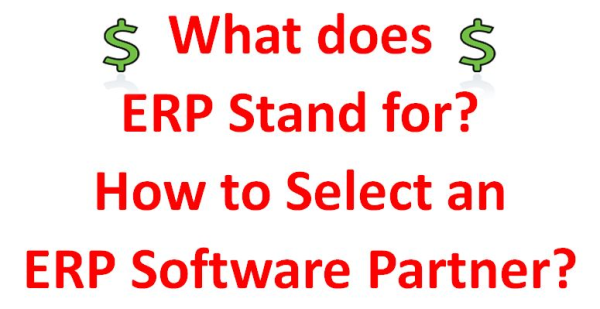1 min read
ERP Consultant Review on the Evolution of ERP Software to Cloud ERP
Written by ERP Consultant Cliff Hall with Cortekx HGL, Inc. As an ERP consultant, we have seen first-hand all the tremendous benefits in savings and...
2 min read
Denise Phillips Mon, Aug 05, 2013

As Sage 100 ERP software consultants, we understand that there are a lot of business and accounting terms to know, and it can start to get confusing. Over the years, we have helped hundreds of clients get trained and up and running on ERP software solutions. Here are some to some business and accounting terms we work with every day. We hope you have fun taking a few minutes to test your knowledge of some common business and accounting terms.
Match up the business and accounting terms with the meanings and check out part 1 and part 2 of this ERP software blog series for additional terms. See answers below…
1. Petty Cash Transfer Form
2. Petty Cash Voucher
3. Bill of Materials
4. Elevated Receipts
5. Negative Approval
6. Positive Pay
7. Cost Pool
8. Cycle Counting
9. Change Orders
10. Accretion Expense
11. Amortization
12. Borrowing Base
13. Mark to Market
A. Write-off of an intangible asset over its expected period of use. Same concept as depreciation for tangible assets.
B. The process of counting a small proportion of total inventory on a daily basis. A key aspect of cycle counting is to investigate and correct the reasons for any errors found, rather than just adjusting the inventory records to correct an error.
C. The record of the materials used to construct a product. It can include raw materials, sub-assemblies, and supplies. It can be used to order parts from suppliers, and is a key part of the evaluated receipts system.
D. The practice of having authorized persons only notify the A/P staff if they do not approve of a supplier invoice. All other invoices are assumed to approved.
E. The adjustment of the recorded value of an asset to its current market value.
F. The expense arising from an increase in the carry amount of the liability associated with an asset retirement obligation. It is classified as an operating expense in the income statement.
G. Is used to document the transfer of cash from the cashier to the petty cash custodian.
H. An anti-fraud measure whereby a company issuing checks notifies its bank of all checks it has issued. The bank then compares this information to checks being presented for payment, and refuses to accept any checks for which it has not received prior notification from the company.
I. The total amount of collateral against which a lender will lend funds to a business.
J. When someone is paid from the petty cash fund, they must complete a petty cash voucher. The voucher provides evidence that the person was actually paid, since someone must sign for the payment received
K. A grouping of costs from which allocations are made to cost objects. The most common use of a cost pool is to accumulate overhead costs that are then allocated to manufactured goods.
L. The engineering staff sometimes issues engineering change orders, where they swap out one part for another in the fabrication of a product.
M. A materials management system under which suppliers deliver materials to a company's production facilities on a just-in-time basis, and are paid based on the company's production of finished goods that incorporate those materials.
Answers: 1(G) 2(J) 3(C) 4(M) 5(D) 6(H) 7(K) 8(B) 9(L) 10(F) 11(A) 12(I) 13(E)

1 min read
Written by ERP Consultant Cliff Hall with Cortekx HGL, Inc. As an ERP consultant, we have seen first-hand all the tremendous benefits in savings and...

As Sage 100 ERP software consultants, there are a lot of business and accounting terms to know. Over the years, we have helped hundreds of clients...

Today, I’d argue that selecting the right ERP software partner or implementation team is just as important as or even more important than the ERP...